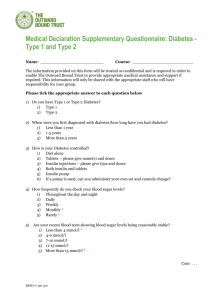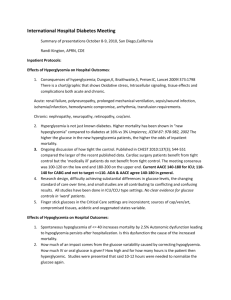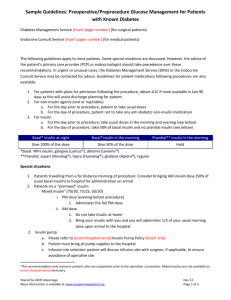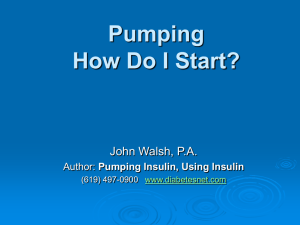Insulin Pump Use for Adequate Glycemic Control in Diabetic Children
advertisement
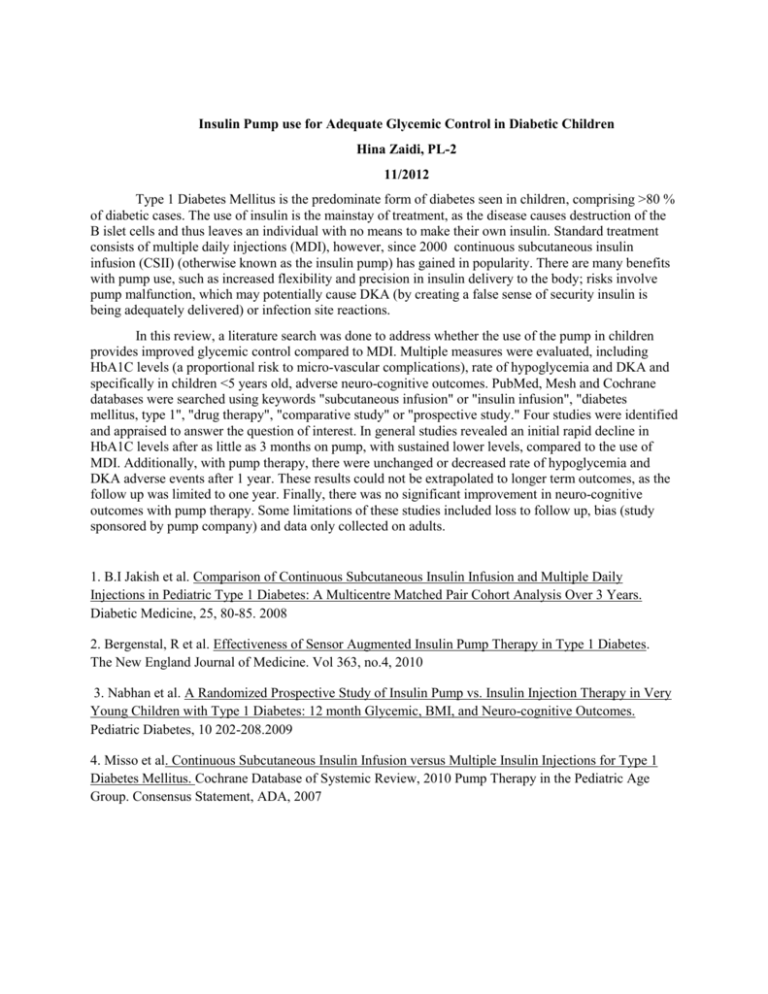
Insulin Pump use for Adequate Glycemic Control in Diabetic Children Hina Zaidi, PL-2 11/2012 Type 1 Diabetes Mellitus is the predominate form of diabetes seen in children, comprising >80 % of diabetic cases. The use of insulin is the mainstay of treatment, as the disease causes destruction of the B islet cells and thus leaves an individual with no means to make their own insulin. Standard treatment consists of multiple daily injections (MDI), however, since 2000 continuous subcutaneous insulin infusion (CSII) (otherwise known as the insulin pump) has gained in popularity. There are many benefits with pump use, such as increased flexibility and precision in insulin delivery to the body; risks involve pump malfunction, which may potentially cause DKA (by creating a false sense of security insulin is being adequately delivered) or infection site reactions. In this review, a literature search was done to address whether the use of the pump in children provides improved glycemic control compared to MDI. Multiple measures were evaluated, including HbA1C levels (a proportional risk to micro-vascular complications), rate of hypoglycemia and DKA and specifically in children <5 years old, adverse neuro-cognitive outcomes. PubMed, Mesh and Cochrane databases were searched using keywords "subcutaneous infusion" or "insulin infusion", "diabetes mellitus, type 1", "drug therapy", "comparative study" or "prospective study." Four studies were identified and appraised to answer the question of interest. In general studies revealed an initial rapid decline in HbA1C levels after as little as 3 months on pump, with sustained lower levels, compared to the use of MDI. Additionally, with pump therapy, there were unchanged or decreased rate of hypoglycemia and DKA adverse events after 1 year. These results could not be extrapolated to longer term outcomes, as the follow up was limited to one year. Finally, there was no significant improvement in neuro-cognitive outcomes with pump therapy. Some limitations of these studies included loss to follow up, bias (study sponsored by pump company) and data only collected on adults. 1. B.I Jakish et al. Comparison of Continuous Subcutaneous Insulin Infusion and Multiple Daily Injections in Pediatric Type 1 Diabetes: A Multicentre Matched Pair Cohort Analysis Over 3 Years. Diabetic Medicine, 25, 80-85. 2008 2. Bergenstal, R et al. Effectiveness of Sensor Augmented Insulin Pump Therapy in Type 1 Diabetes. The New England Journal of Medicine. Vol 363, no.4, 2010 3. Nabhan et al. A Randomized Prospective Study of Insulin Pump vs. Insulin Injection Therapy in Very Young Children with Type 1 Diabetes: 12 month Glycemic, BMI, and Neuro-cognitive Outcomes. Pediatric Diabetes, 10 202-208.2009 4. Misso et al. Continuous Subcutaneous Insulin Infusion versus Multiple Insulin Injections for Type 1 Diabetes Mellitus. Cochrane Database of Systemic Review, 2010 Pump Therapy in the Pediatric Age Group. Consensus Statement, ADA, 2007


